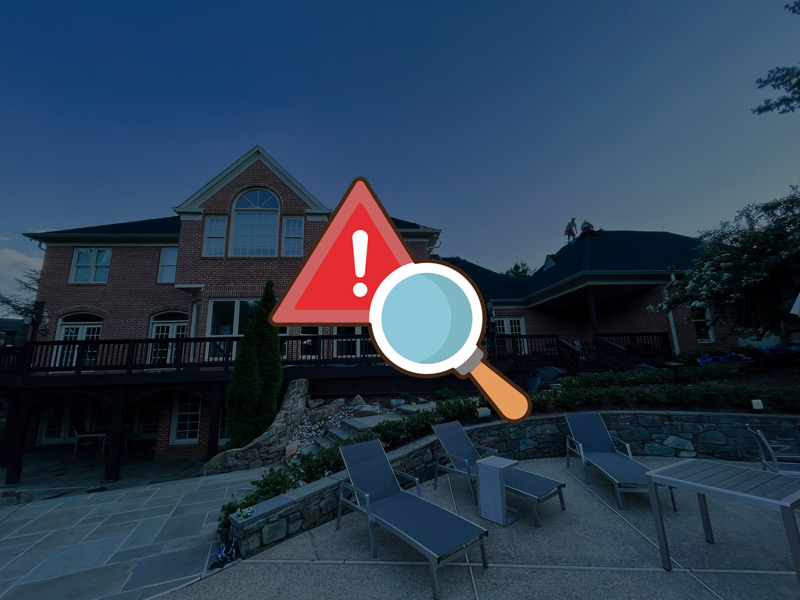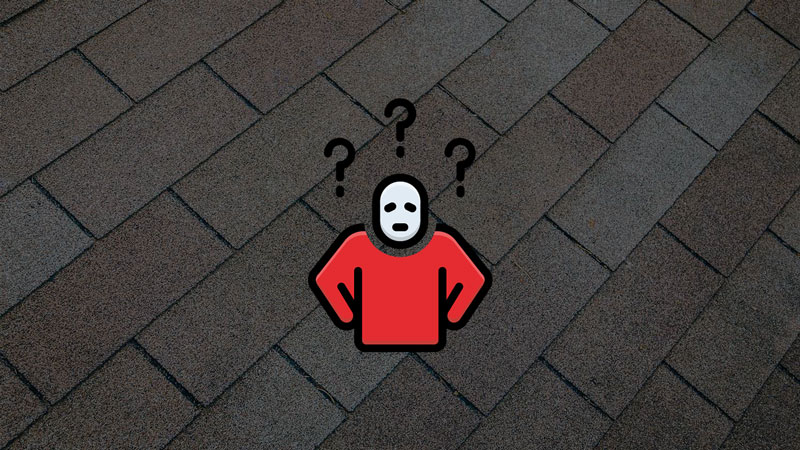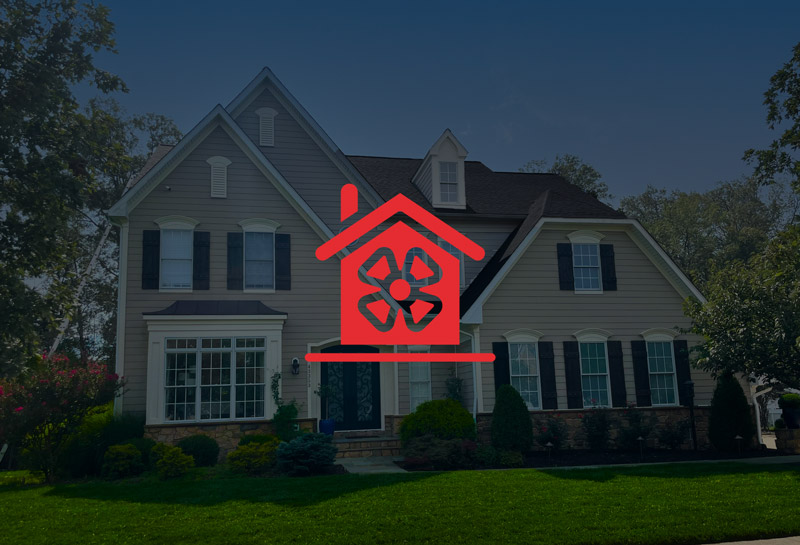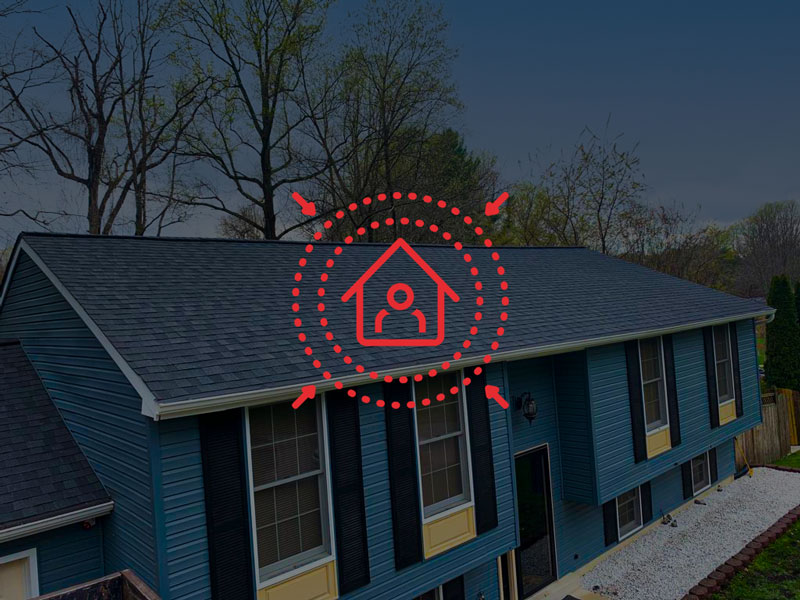Roof Leak Mold Remediation: Protecting Your Home and Health
Roof leak mold remediation, often overlooked, is a critical aspect of maintaining a healthy living environment. When rainwater infiltrates your home through a compromised roof, it creates a fertile breeding ground for mold. This dual problem of roof leaks and mold growth can lead to structural damage and health concerns.

Identifying Roof Leaks
When it comes to roof leak mold remediation, the first step is recognizing the presence of a roof leak. Understanding the signs and taking proactive measures can save you from extensive damage and costly repairs down the line.
Common Signs of Roof Leaks
Water Stains: One of the most obvious indicators of a roof leak is water stains on your ceiling or walls. These stains often appear as discolored patches and can vary in size.
- Peeling Paint or Wallpaper: When water infiltrates the structure of your home, it can cause paint or wallpaper to bubble or peel. Keep an eye out for any unusual changes in your interior wall coverings.
- Damp or Moldy Odors: A musty, damp odor in your home can be a sign of hidden moisture, often caused by roof leaks. If you notice this smell, investigate further.
The Importance of Regular Roof Inspections
Regular roof inspections are key to preventing roof leak mold remediation issues. Even if you haven’t noticed any obvious signs of a leak, having your roof professionally inspected on a routine basis can help identify problems before they escalate. Professional roofing contractors have the expertise to spot subtle issues that may go unnoticed by the untrained eye.
Using DIY Methods to Detect Leaks Before They Become Major Issues
While professional inspections are essential, there are also some DIY methods you can use to detect roof leaks early:
- Attic Inspection: During daylight hours, turn off the lights in your attic and look for any signs of outside light seeping through. This can indicate holes or gaps in your roof.
- Check for Dripping: On a rainy day, inspect your attic for any signs of dripping or moisture. If you find any, it’s a clear indication of a roof leak.
- Examine Shingles: From the ground, you can use binoculars to check for missing, damaged, or curling shingles. These are potential entry points for water.

Understanding Mold Growth
It’s essential to have a clear understanding of what mold is, how it thrives in moist environments, the health risks associated with mold exposure, and how mold growth can exacerbate roof leak issues.
What Mold Is and its Affinity for Moist Environments
Mold is a type of fungus that can be found both indoors and outdoors. It reproduces by creating tiny spores that are invisible to the naked eye, making it highly adaptable and resilient. Mold thrives in environments with high humidity and moisture, making it a common problem in areas affected by roof leaks.
Health Risks Associated with Mold Exposure
Exposure to mold can pose significant health risks, especially when it’s left unaddressed. Common health issues associated with mold exposure include:
- Respiratory Problems: Mold spores can be inhaled, leading to coughing, sneezing, wheezing, and exacerbating conditions like asthma.
- Allergic Reactions: Many people are allergic to mold, and exposure can lead to symptoms like itching, red eyes, and skin rashes.
- Irritation: Mold exposure can irritate the eyes, nose, throat, and skin, causing discomfort and sometimes severe reactions.
- Fungal Infections: In rare cases, individuals with compromised immune systems may develop fungal infections from mold exposure.
Exacerbating Roof Leak Problems
Roof leaks and mold growth often go hand in hand. When moisture from a roof leak interacts with building materials, it provides the ideal conditions for mold to flourish. This can lead to further deterioration of your home’s structure, including:
- Weakened Roofing Materials: Continuous exposure to moisture can weaken the roof’s structure, causing more leaks and potential collapses.
- Interior Damage: Mold growth on walls, ceilings, and insulation can result in costly interior damage that goes beyond the initial roof leak.
- Health Concerns: As mold spreads, the health risks to occupants increase, creating a hazardous living environment.

Roof Leak Repair
You’ve identified a roof leak, taking immediate action is crucial to prevent further damage to your home and avoid exacerbating mold growth. In this section, we’ll discuss the steps you should take, temporary fixes to prevent additional damage, and the importance of enlisting a professional roofing contractor for a permanent solution.
Steps to Take When You Identify a Roof Leak
- Safety First: Ensure your safety by avoiding any electrical appliances or standing water in the affected area.
- Contain the Leak: Place a bucket or container beneath the leak to catch dripping water. This prevents water from spreading to other parts of your home.
- Identify the Source: Try to determine the source of the leak from inside your home. Look for wet spots or stains on the ceiling or walls, which can help pinpoint the location.
- Temporary Measures: While waiting for professional assistance, consider using a tarp or plastic sheet to cover the affected area on the roof, preventing further water ingress.
Temporary Fixes to Prevent Further Damage
While temporary fixes can provide short-term relief, they are not a substitute for professional roof leak mold remediation. Some temporary measures include:
- Applying Roof Sealant: Roof sealant can be used to cover small cracks or gaps temporarily. However, it’s not a permanent solution.
- Patching Holes: If you can safely access the roof, you may patch small holes or damaged shingles with roofing cement or a patch kit.
- Using Roofing Tape: Roofing tape can be applied as a temporary seal on damaged areas, but it’s important to remember that it won’t last long-term.
Hiring a Professional Roofing Contractor for a Permanent Solution
For a long-lasting and effective solution, it’s essential to enlist the services of a professional roofing contractor experienced in roof leak mold remediation. Here’s why:
- Expertise: Roofing professionals have the knowledge and expertise to identify the root cause of the leak and recommend the appropriate repairs.
- Quality Repairs: They use high-quality materials and techniques to ensure that the repairs stand the test of time.
- Preventing Future Leaks: Professionals can identify potential trouble spots and address them to prevent future leaks.
- Safety: Roof repairs can be dangerous, and professionals have the necessary safety equipment and training to work safely at heights.

Mold Remediation
Mold remediation is a crucial step in addressing the consequences of roof leak mold remediation. This process involves removing mold growth, ensuring safety, and implementing preventive measures to stop mold from returning.
The Process of Mold Removal and Cleanup
Mold removal and cleanup is a meticulous process that should be handled by professionals experienced in mold remediation. Here’s an overview of the steps involved:
- Assessment: The first step is a thorough assessment of the affected areas to determine the extent of mold growth. This helps in planning the remediation process.
- Containment: To prevent the spread of mold spores to unaffected areas, professionals will set up containment barriers, often using plastic sheeting and negative air pressure systems.
- Mold Removal: Mold is carefully removed from surfaces and materials using specialized techniques and cleaning agents. This may involve scrubbing, sanding, or even removing and replacing affected materials.
- HEPA Vacuuming: High-efficiency particulate air (HEPA) vacuuming is used to capture and remove mold spores and debris from surfaces and the air.
- Cleaning and Disinfecting: Affected surfaces are thoroughly cleaned and disinfected to ensure the elimination of mold and prevent regrowth.
- Drying: Proper drying of the area is crucial to prevent future mold growth. Dehumidifiers and fans may be used to achieve optimal moisture levels.
Safety Precautions When Dealing with Mold
Mold remediation should always prioritize safety. Professionals follow strict safety guidelines, including:
- Personal Protective Equipment (PPE): Technicians wear PPE, such as masks, gloves, and suits, to protect themselves from mold exposure.
- Containment: As mentioned earlier, containment barriers are set up to prevent the spread of mold spores.
- Proper Ventilation: Adequate ventilation is maintained to remove airborne mold spores from the work area.
Tips for Preventing Mold Re-Growth After Remediation
Once mold remediation is complete, it’s essential to take preventive measures to avoid future mold issues:
- Address the Root Cause: Identify and address the root cause of the moisture problem, such as roof leaks, to prevent mold from returning.
- Regular Inspections: Conduct regular inspections to catch any potential leaks or moisture issues early.
- Maintain Proper Ventilation: Ensure your home has proper ventilation in areas prone to moisture, such as bathrooms and kitchens.
- Control Humidity: Use dehumidifiers to maintain optimal indoor humidity levels, typically between 30% and 50%.

Preventing Future Roof Leaks and Mold Issues
After addressing roof leak mold remediation, it’s crucial to take proactive steps to prevent these problems from recurring. Here are some practical tips to safeguard your home:
Roof Maintenance Tips to Reduce the Risk of Leaks
Regular roof maintenance can significantly reduce the risk of future leaks. Here’s what you can do:
- Clear Debris: Remove leaves, branches, and debris from your roof and gutters regularly. Accumulated debris can block water drainage and lead to leaks.
- Inspect Shingles: Check your roof’s shingles for signs of wear and damage. Replace any missing or damaged shingles promptly to maintain the integrity of your roof.
- Seal Gaps and Cracks: Inspect the flashing around vents, chimneys, and skylights. Seal any gaps or cracks with roof sealant to prevent water infiltration.
- Trim Overhanging Branches: Trim tree branches that hang over your roof to prevent them from scratching or damaging the shingles during storms.
The Importance of Proper Ventilation and Insulation
Proper attic ventilation and insulation play a significant role in preventing roof leaks and mold growth:
- Ventilation: Adequate attic ventilation helps regulate temperature and moisture levels, reducing the risk of condensation that can lead to mold growth.
- Insulation: Proper insulation can prevent heat from escaping and causing ice dams on the roof, which can lead to leaks. Ensure your attic is well-insulated.
Regular Inspections and Proactive Measures to Safeguard Your Home
- Schedule Professional Inspections: Arrange for annual or bi-annual professional roof inspections. Experienced contractors can spot potential issues before they become major problems.
- Act on Early Warning Signs: If you notice any signs of roof damage or leaks, such as water stains or peeling paint, address them promptly. Don’t wait for the problem to escalate.
- Gutter Maintenance: Keep your gutters clean and in good condition. Clogged or damaged gutters can lead to water pooling on your roof, increasing the risk of leaks.
- Monitor Indoor Humidity: Keep an eye on indoor humidity levels, especially in areas prone to moisture, like bathrooms and basements. Use dehumidifiers if necessary to maintain optimal levels.
View More Articles
Please Share!










